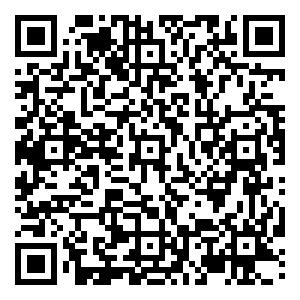| [1] |
张建宇.美国排污许可制度管理经验:以水污染控制许可证为例[J].环境影响评价,2016,38(2):23-26.
|
| [2] |
孙彩萍,刘孝富,孙启宏,等.美国固定源监管机制对我国排污许可证实施的借鉴[J].环境工程技术学报,2018,8(2):191-199.
|
| [3] |
梁忠,汪劲.我国排污许可制度的立法定位与立法需求:对制定排污许可管理条例的法律思考(续)[J].环境影响评价,2018,40(2):20-23.
|
| [4] |
曹俊.改革,排污许可制度的精神特质:关于排污许可制度改革的九个关键词[J]. 中国生态文明, 2018(1):23-32.
|
| [5] |
COPELAND C. Clean Water Act:A Summary of the Law[M]. Washington D.C.:Congressional Research Service Reports, 2012.
|
| [6] |
US EPA, OW, OWM, Water Permits Division. NPDES Permit Writers' Manual[M].Washington D.C:Water Permits Division Office of Wastewater Management, 2010.
|
| [7] |
WALL T M.EPA's deaft stratecy for National Clean Water Industrial Regulations and the 2004/2005 Effluent Guidelines Plan[J]. Proceedings of the Water Environment Federation, 2004,6:467-469.
|
| [8] |
US EPA. Technical Support Document for Water Quality-Based Toxic Control[M].Washington DC,1991.
|
| [9] |
JULIAN II P,PAYNE G, XUE S K. Water Quality in the Everglades Protection Area[M].South Florida:South Florida Water Management District, 2015.
|
| [10] |
RAGAS A M J, SCHEREN P A G M, KONTERMAN H I, et al. Effluent standards for developing countries:combining the technology-and water quality-based approach[J]. Water Science & Technology, 2005, 52(9):133-144.
|
| [11] |
FARZIN Y H. The effects of emissions standards on industry[J]. Journal of Regulatory Economics, 2003, 24(3):315-327.
|
| [12] |
US EPA. Learn About Effluent Guidelines[EB/OL]. https://www.epa.gov/eg/learn-about-effluent-guidelines. 2018-09-19.
|
| [13] |
TABLER S.EPA's Program for establishing national emission standards for hazardous air pollutants[J]. Air Repair, 1984, 34(5):532-536.
|
| [14] |
US EPA, Office of Water Enforcement and Permit, Office of Water Regulations and Standards. Technical Support Document for Water Quality-Based Toxics Control[M]. Washington DC:Office of Water, 1991.
|
| [15] |
EPA.Technology-based Effluent Limitations for Non-POTWs[EB/OL].https://www.epa.gov/npdes/outreach_files/web-based_train. 2014-07-22.
|
| [16] |
开根森,颜彭莉.美国水污染排放限值有何不同?[J].环境经济,2015(ZC):21.
|
| [17] |
RAGAS A M J, LEUVEN R S E W. Modelling of water quality-based emission limits for industrial discharges in rivers[J]. Water Science & Technology, 1999, 39(4):185-192.
|
| [18] |
HANSON D A. Cost-effective NPDES permitting strategies[J]. Pollution Engigeering, 1995,27(9):34-36.
|
| [19] |
US EPA. Guidance for water-quality-based decisions:the TMDL process[M]. Washington DC:Office of Water, 1991.
|
| [20] |
BRANDES R, NEWTON B, OWENS M, et al. Draft Technical Support Document for Water Quality-Based Toxics Control[M]. Washington DC:Office of Water, 1985.
|
| [21] |
US EPA. Technical Support Document Derivation of the Water Quality Based Effluent Limit (WQBEL) for Phosphorus in Discharges to the Everglades Protection Area[EB/OL]. https://www.epa.gov/sites/production/files/2014-01/documents/attachmentgforad, 2010-9-3.
|
| [22] |
魏玉霞,张明慧,胡林林,等.基于水污染物排放标准的排污许可总量计算方法及应用性探讨[J].环境工程技术学报,2016,6(6):629-635.
|
| [23] |
梁础文.中美炼钢行业污染物排放限值研究[J].工程建设与设计,2016(1):90-93.
|
| [24] |
柴西龙,邹世英,李元实,等.环境影响评价与排污许可制度衔接研究[J].环境影响评价,2016,38(6):25-27,35.
|
| [25] |
梁忠. 中国排污许可立法工作应提挡加速[J]. 世界环境, 2017(6):62.
|
| [26] |
邹世英,柴西龙,杜蕴慧,等.排污许可制度改革的技术支撑体系[J].环境影响评价,2018,40(1):1-5.
|
| [27] |
吕晓君,吴铁,程曦,等.排污许可制技术支撑体系研究[J].环境保护,2018,46(8):27-30.
|
| [28] |
徐力,周其胤,吴蕾,等.安徽淮河流域造纸工业水污染排放限制的探究[J].广东化工,2018,45(2):150-152,156.
|
| [29] |
张玮,白金.排污许可证中污染物排污量核算方法分析[J].环境与发展,2014,26(增刊1):119-122.
|
| [30] |
王淑一,雷坤,邓义祥,等.企业水污染源基于技术的排污许可限值确定方法及其案例研究[J].环境科学学报,2016,36(12):4563-4569.
|
| [31] |
苗永刚,赵玉强,荆勇,等.排污许可量核算方法与体系研究:以沈阳市为例[J].环境保护科学,2016,42(5):45-50.
|
| [32] |
王淑一,雷坤,邓义祥,等.基于不同时间周期排放量的排污许可限值[J].环境科学研究,2016,29(2):299-305.
|
| [33] |
孙严,宋新山,邓义祥,等.污染物排放波动特征及对排污许可限值的影响[J].环境保护科学,2017,43(4):17-20,42.
|
| [34] |
刘红磊,李慧,倪颀业,等.工业园区企业排水水质调研及园区纳管常规指标限值雏议[J].给水排水,2016,52(12):65-70.
|
| [35] |
张一帆,雷坤,邓义祥,等.应用等效质量方法确定间接排放企业的排污许可限值:以常州市为例[J].环境工程技术学报,2017,7(6):754-758.
|
| [36] |
姜秋俚,王鹏飞,韩天放,等.基于Petri网与BAT的造纸行业排放限值仿真[J].东北大学学报(自然科学版),2016,37(5):702-705,725.
|
| [37] |
孟宪荣,金文龙,李勤.工业废水锑排放标准限值的制订[J].环境监测管理与技术,2016,28(4):57-60.
|
| [38] |
纪志博,王文杰,刘孝富,等.流域畜禽养殖排污许可方案设计:以柘溪水库为例[J].环境工程技术学报,2017,7(5):621-628.
|
| [39] |
孟伟,王海燕,王业耀.流域水质目标管理技术研究(Ⅳ):控制单元的水污染物排放限值与削减技术评估[J].环境科学研究,2008,21(2):1-9.
|
| [40] |
魏文龙,曾思育,杜鹏飞,等.一种兼顾目标总量和容量总量的水污染物排放限值确定方法[J].中国环境科学,2014,34(1):136-142.
|
| [41] |
乔飞,雷坤,邓义祥,等. 基于水质达标的污染源排污许可限值确定方法:CN106202950A[P]. 2016-12-07.
|

 点击查看大图
点击查看大图

 登录
登录 注册
注册 E-alert
E-alert

 登录
登录 注册
注册 E-alert
E-alert

 下载:
下载:
